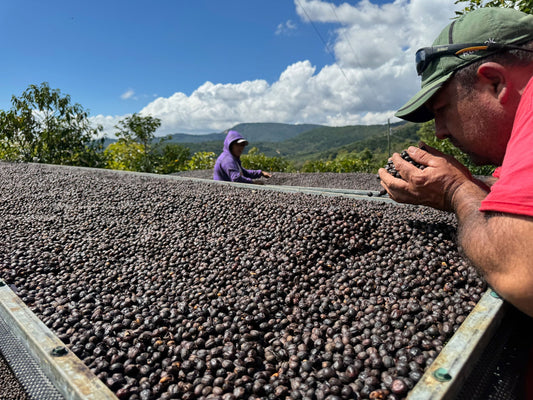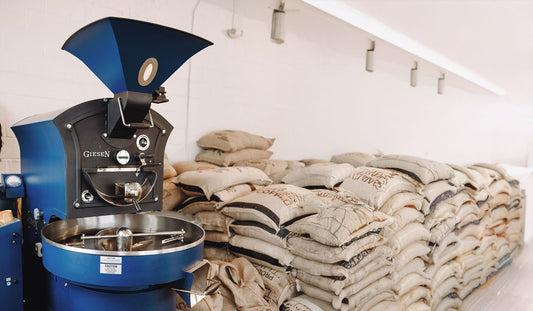The fermentation in coffee processing is simply the breakdown of sugars in the coffee cherry's mucilage by yeasts and bacteria into alcohols and acids. This is a natural process, which not only helps remove the mucilage from the bean, but also introduces some unique flavor compounds. The environment, temperature, duration, and microbial community are pivotal in driving the fermentation process, ultimately impacting the coffee's final acidity, body, and overall flavor.
Fermentation Methods and Flavors
There are several kinds of fermentation processes, and new types are being tried out every day. Here’s some commonly talked about ones.
Aerobic Fermentation: In this method, coffee is fermented in the presence of oxygen. Microorganisms consume the oxygen and sugars, producing acids and other compounds that can add brightness and clarity to the coffee. Aerobic fermentation tends to highlight the coffee's inherent characteristics, leading to a clean yet distinct profile.
Anaerobic Fermentation: Anaerobic (oxygen-free) environments lead to a different set of chemical reactions, often resulting in more complex and nuanced flavors. This method can produce coffees with unique profiles, characterized by winey, fruity, or even boozy notes, depending on the duration and specific conditions of the fermentation process.
Carbonic Maceration: Directly borrowed from the wine industry, this method involves fermenting the whole cherries in a CO2-rich environment. The intracellular enzymatic activity within the cherries transforms the sugars, leading to a distinctively smooth, fruity, and complex cup.
Lactic Fermentation: By controlling the fermentation environment to favor the growth of lactic acid bacteria, this method produces coffees with a pronounced creamy texture and bright acidity, often with unique lactic or yogurty notes.
Origins and Preferences
Central and South America: Countries like Costa Rica and Colombia have been the leaders of experimentation with anaerobic and lactic fermentation methods, leveraging their rich biodiversity to influence the fermentation's microbial activity. They have produced coffees with unique and innovative flavor profiles that stand out in the specialty coffee market.
Africa: While traditional natural and washed processes generally dominate Africa, innovative producers in Ethiopia and Kenya are beginning to experiment with controlled fermentation methods to add value and distinctiveness to their coffees.
Asia: In regions like Indonesia and India, where the climate can affect coffee drying, anaerobic fermentation provides a way to control moisture and develop flavor complexity, catering to markets seeking unique profiles.
Quality, Consistency, and Sustainability
Quality and Consistency: The controlled fermentation methods offer producers the ability to craft distinct flavor profiles, elevating the coffee's notes and market value. However, the reliance on specific environmental conditions and microbial communities means that replicating results can be very challenging, requiring precise management and thorough understanding of the fermentation processes.
Sustainability: From a sustainability perspective, fermentation methods that require less water, such as anaerobic fermentation, offer great environmental advantages. However, managing waste products from these processes, also particularly in anaerobic fermentation, where effluents can be more concentrated, poses all sorts of challenges. As fast as the processes are evolving, innovation in the use of by-products for composting or as biofuels is evolving too.
The Bottom Line
The introduction of fermentation into the coffee processing world has served as a connection between an ancient community, and an innovative science from another. Through a specific batch of microorganisms, producers can now influence the sensory profile of their coffees. What’s next?



